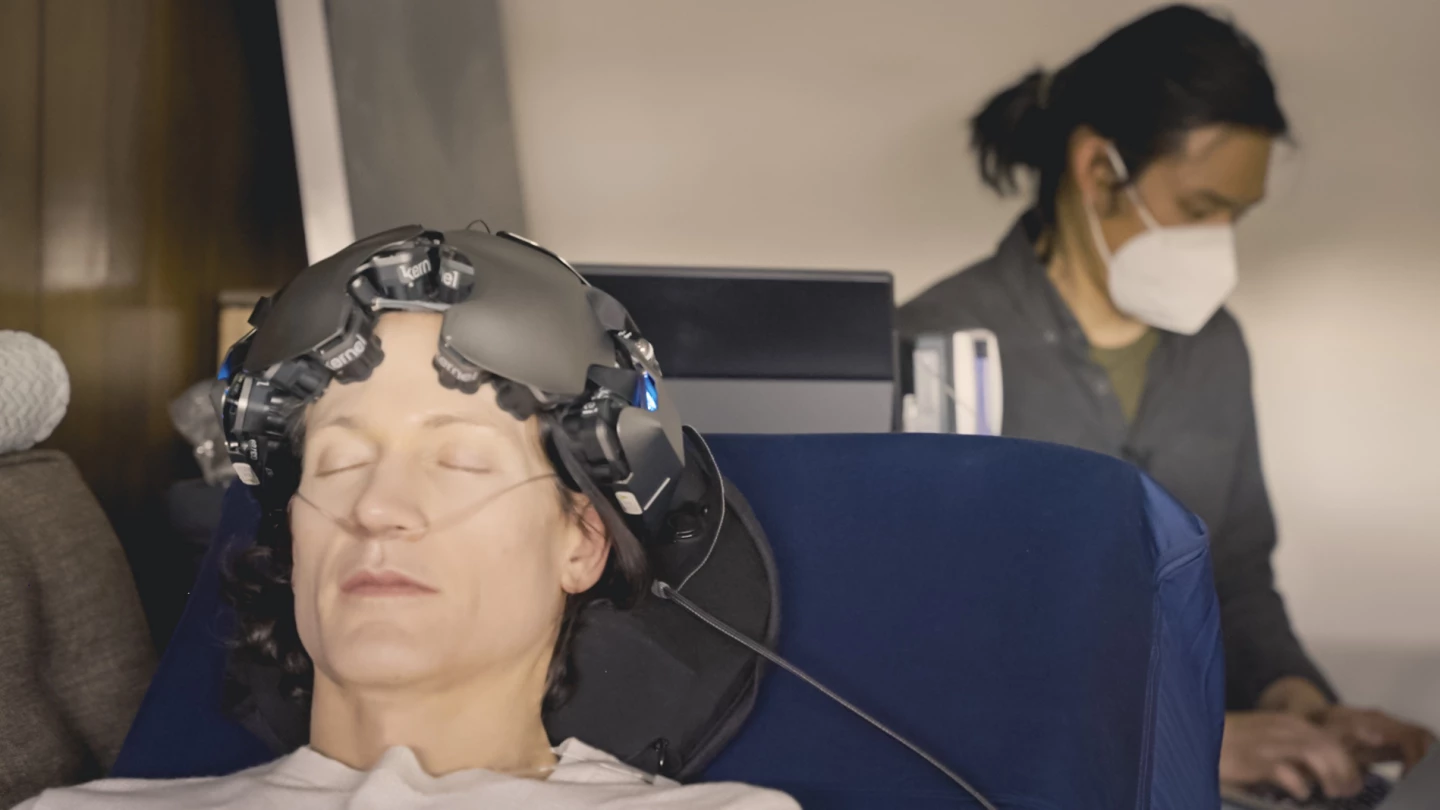An ongoing study is testing a new kind of neuroimaging device designed to easily capture brain activity in real-time. These preliminary experiments will investigate the effects of ketamine on functional connectivity in the brain before, during and after an experience.
The new technology leverages a pre-existing brain imaging technique called functional near-infrared spectroscopy (fNIRS). The most common form of the technology is called continuous-wave fNIRS, but recently a more detailed and accurate iteration has been developed called time-domain (TD)-fNIRS.
The problem with TD-based fNIRS imaging is it generally requires big, heavy and expensive machines. This new device, called the Kernel Flow, has been developed over several years with a goal of making TD-fNIRS cheaper, lighter and more easily deployable in natural environments.
A study published earlier this year demonstrated the Kernal Flow’s ability to deliver brain activity data equal to that recorded with bulky, immobile TD-fNIRS systems. Now the device is being used in a feasibility study designed to test how effective the Kernal Flow is in measuring the brain effects of a ketamine experience.

“Kernel’s Flow technology is revolutionary in the field of brain imaging as it is the first easy-to-use wearable that can collect real-time brain activity before, during and after a psychedelic experience,” said Doug Drysdale, CEO of Cybin, a pharmaceutical company researching psychedelics. “Previously, studies had to rely on subjective patient reporting. By utilizing Flow, we will now be able to quantifiably gather real-time functional brain activity during our clinical and research studies evaluating psychedelic-based therapeutics.”

The ketamine study is ongoing but a new announcement revealed the first pilot participant in the trial has been dosed. Volunteering to test the study protocol was CEO of Kernal, Bryan Johnson.
This preliminary data release doesn’t show a great deal beyond establishing the Kernal Flow device does work effectively. Johnson recorded his brain activity with the device for five days leading up to the ketamine session and for five days following.
The results reveal distinct changes in the brain’s functional connectivity for several days after the acute ketamine session. Johnson said these results are similar to what has been reported in previous studies investigating the brain effects of ketamine using more expensive neuroimaging systems.
The @KernelCo x @CybinInc ketamine pilot results at a glance pic.twitter.com/z4R0PErNwc
— Bryan Johnson (@bryan_johnson) May 9, 2022
“We’re excited to report the pilot results of a longitudinally rich dataset of brain activity before, during a ketamine-induced altered-state experience, and after,” said Johnson. “The quality of the data recorded with Flow may lead to a better understanding of the neuro effects from psychedelics on the brain and help to advance these powerful new therapies for patients.”
The study is still recruiting participants and looking to enroll around 15 subjects. Any results are not expected until later in the year, and while Kernal and Cybin are of course interested in delivering some novel data on how a brain responds to ketamine over time, the real takeaway will be the demonstration of how the Flow device can be used in real-world research.
A behind the scenes peek at this exciting study and results https://t.co/ECXodII7Il pic.twitter.com/BdTyyPdr1J
— Bryan Johnson (@bryan_johnson) May 9, 2022
This trial is a promising proof-of-concept for what Kernal describes as, “making neuroimaging mainstream.” The ketamine study is one of several ongoing research projects from the company testing how its headset works across several real-world applications.
Source: Kernal/Cybin






